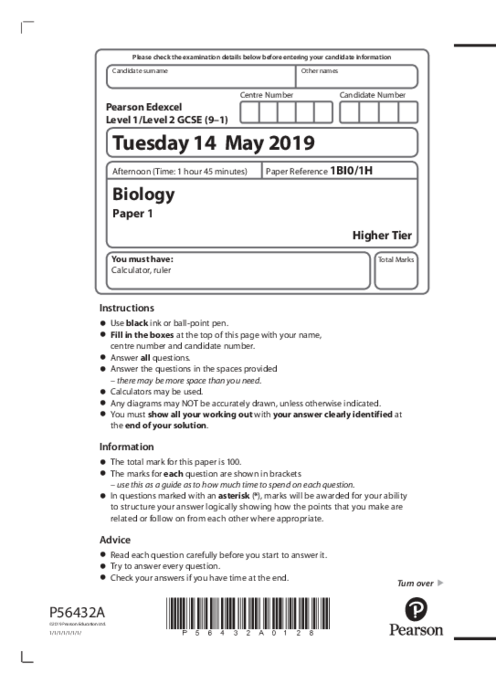Biology 1BI0/1H May June 2019
omer uner
1. Cell Biology and Microscopy | Identification of cell structures, differences between prokaryotic and eukaryotic cells, functions of cell organelles, and calculating magnification and actual size of cells using microscope images.
2. Genetics and Evolution | Use of Punnett squares to predict inheritance, dominant and recessive allele interactions, role of mutations in genetic variation, evidence of evolution from fossils, and classification of organisms based on taxonomy.
3. Enzymes and Biological Processes | Factors affecting enzyme activity, role of enzymes in metabolism and digestion, enzyme-substrate specificity, and experimental methods for measuring enzyme reaction rates.
4. Pathogens, Immunity, and Disease | Characteristics of bacterial and viral infections, immune system response, importance of vaccinations, effectiveness of antibiotics, and development of antibiotic resistance in bacteria.
5. Human Health and Lifestyle | Impact of diet, smoking, and exercise on cardiovascular health, calculation of BMI and waist-to-hip ratio, effects of statins on cholesterol levels, and mechanisms of action of common drugs.
6. Genetic Engineering and Biotechnology | Applications of genetic modification in medicine and agriculture, benefits and risks of genetically modified organisms, use of plasmids in genetic engineering, and ethical considerations in biotechnology.
See More Paper 1 7 months ago
+ 8000 Biology (1BI0) resources in one place Time To Test
Related Past Papers
Related Tutorials
Crash report

